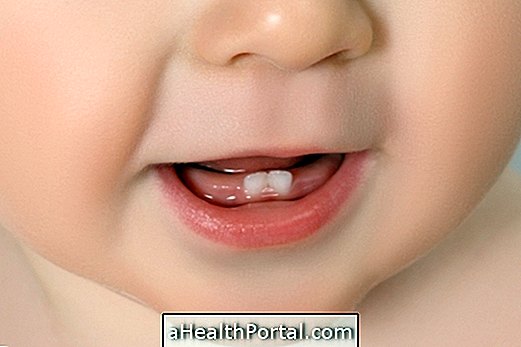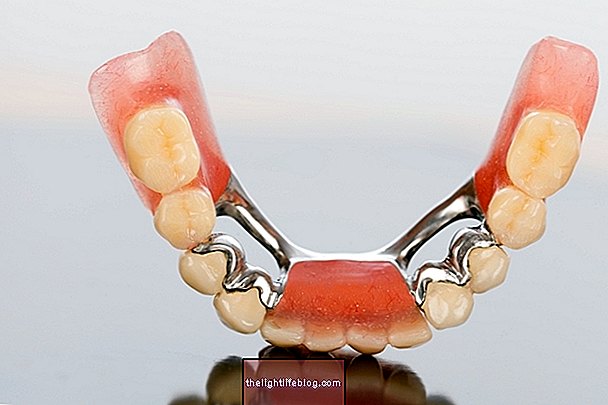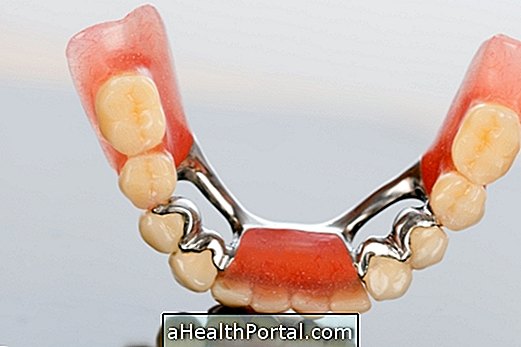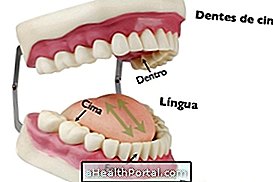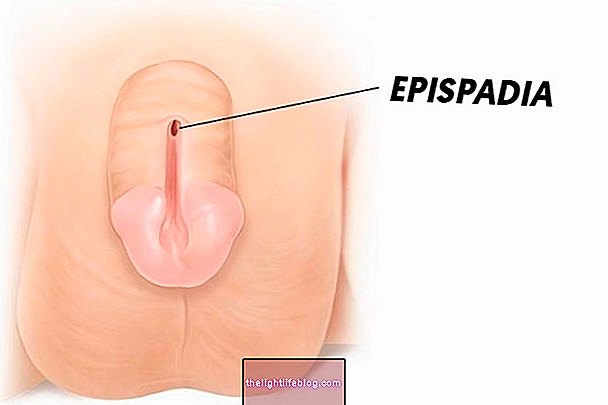The displacement of the mandible happens when the condyle, which is a rounded part of the bone of the mandible, moves from its place in the temporomandibular joint, also known as TMJ, and gets stuck in front of a bone section, called joint eminence, causing a lot of pain and discomfort.
This can happen when the mouth is opened a lot, such as when yawning or during a dental procedure, for example, or when there is a problem with the temporomandibular joint. If this happens, and the jaw does not return to the correct location, you should immediately go to the hospital and not try to reposition it at home.
The treatment consists of using a correct technique to reposition the jaw in the correct place, which should only be done by a doctor. However, in more severe cases, it may also be necessary to resort to surgery.

What are the symptoms
When the jaw is dislocated, severe pain and discomfort, difficulty in speaking and inability to open or close the mouth may occur. In addition, the jaw may be twisted to one side.
How the treatment is done
Sometimes, the jaw can return to its place without the need for treatment, however, if it does not, it may be necessary to intervene by a dentist, or another doctor, who will put the jaw back in place, pulling it to down and tilting the chin upwards to reposition the condyle.
As soon as the jaw is back in place, the doctor can apply a Barton bandage to limit jaw movement and prevent further dislocation. In addition, you should avoid over-opening your mouth for at least 6 weeks, and you should also avoid eating hard foods that require a lot of chewing, such as meat, carrots or toast, and giving preference to soft foods such as soups and minguinas. .
If dislocation of the jaw becomes very frequent, it may be necessary to resort to surgery to fix the condyle with surgical wires in order to prevent the temporomandibular joint from locking again, and to reduce the risk of future dislocations.

Possible causes
The dislocation of the jaw can happen due to an injury, or in situations where the mouth is wide open, such as when yawning or during dental procedures or even when vomiting.
However, it can also occur in people who have malformation of the jaw bones, or problems in the temporomandibular joint, who have had previous injuries in the jaw, or who suffer from hypermobility syndrome, which is a condition in which laxity in the ligaments and joints occurs. .
Displacement is also more likely to happen in people who have had previous displacements.
How to prevent
In people at risk of jaw dislocation, the dentist may indicate the use of a plaque to be used throughout the day or just at night when sleeping, which helps the jaw to move properly.
There are also surgical procedures that can help prevent further dislocation of the jaw.
Was this information helpful?
Yes No
Your opinion is important! Write here how we can improve our text:
Any questions? Click here to be answered.
Email in which you want to receive a reply:
Check the confirmation email we sent you.
Your name:
Reason for visit:
--- Choose your reason --- DiseaseLive betterHelp another personGain knowledge
Are you a health professional?
NoMedicalPharmaceuticalsNurseNutritionistBiomedicalPhysiotherapistBeauticianOther
